‘Good’ vs ‘bad’ pain: How to tell when your body is saying 'no' while exercising
A persistent knee pain, recurring back trouble, a previously sprained talocrural joint or other injuries may make y'all less willing to get all out when exercising.
Y'all instinctively hold dorsum or avoid loading on the affected body function because, well, information technology will otherwise exist sore or even painful.
But what if your overzealous buddy is screaming motivation at yous to crank out more than repetitions? Or the trainer – who believes in the "no pain, no gain" adage a little too much – wants y'all to push beyond your pain?
Perhaps your hamstring may already experience like tearing but your yoga teacher adjusts your pose into an even deeper stretch. You might as well be carried away by the pumping, high-octane music blasting from the speakers to pedal faster and harder in spin class.
Here's the thing: All it takes is one incident to go injured.
"Astringent injury can occur fifty-fifty during the first exercise bout, particularly if one over-exerts or is just non accustomed to that level of exercise intensity," said Dr Ivy Lim, a consultant with Changi General Hospital's Department of Sport and Practice Medicine.
"When the pain is sharp or severe, or associated with other symptoms such equally swelling, it is a sign to cease the exercise and seek further attention."
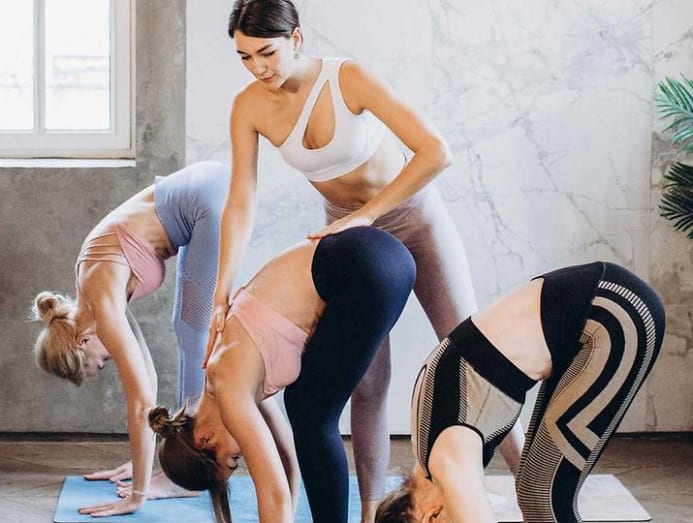
Fettle Beginning Singapore's Christine Chiam agreed. "While we button ourselves to become fitter and stronger, pain is an aberrant symptom," said the fitness training manager. "Work within your comfort levels as it is more important to stay safe and injury-free than to feel the peer pressure and over-exert," she said.
Aqil Zainal, a strength and conditioning skilful from Evolve MMA, is some other trainer who agrees that pain is a crimson flag. "If you do your exercises with proper form, sufficient bracing and control, a certain level of soreness may be acceptable. Simply at that place shouldn't be pain, specially unbearable pain or discomfort."
WHAT HAS RHABDOMYOLYSIS GOT TO DO WITH OVER-EXERTION?
Not listening to the torso could have contributed to the cases of rhabdomyolysis that yous have read in the news. The painful condition, which affects overworked muscles, "is fairly common but underdiagnosed" in Singapore, said Adjunct Assistant Professor Endean Tan, a consultant in full general medicine at Tan Tock Seng Infirmary. "My team has seen virtually five such cases in the past month alone."
Severe injury can occur even during the first practise bout, especially if one overexerts or is just not accustomed to that level of exercise intensity.
In fact, of the concluding twenty rhabdomyolysis patients Adj Asst Prof Tan has seen, spinning has been responsible for 19 of them, he said. "Only one case was a young man who went for a 10km run without prior grooming."
Dr Sean Leo, an orthopaedic surgeon at Mount Elizabeth Novena Hospital, also, has noticed individuals in their late 20s or 30s developing rhabdomyolysis after spin classes.
READ: Why do men sweat more than women? And do you lot burn more calories if you do?
And then what exactly is rhabdomyolysis and why is it linked to spinning?
"Rhabdomyolysis is the excessive breakdown of muscle cells, which results in the release of their components into the blood stream, many of which are directly toxic to other cells and particularly, the kidneys," said Adj Asst Prof Tan.
There will exist musculus weakness, pain (even when you are not moving the afflicted muscles) and dark urine produced. It is a serious status that requires immediate medical help, he said.
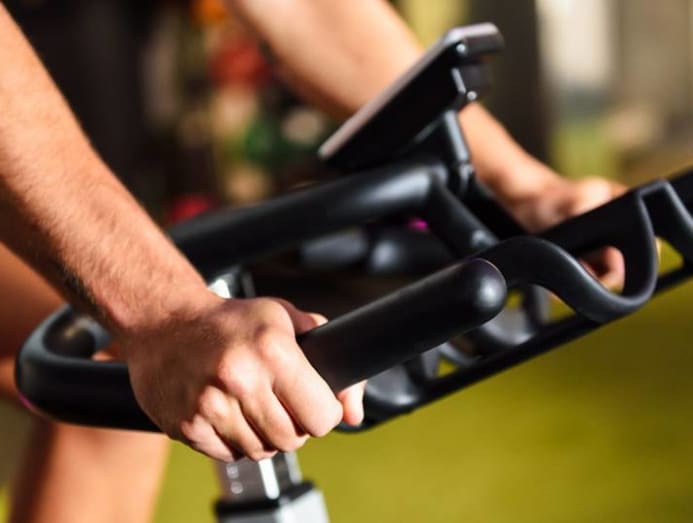
As for the contempo connexion between rhabdomyolysis and spinning, information technology could be the popularity of time-saving, high-intensity exercises that include said spinning likewise equally high-intensity interval training or HIIT programmes, said Adj Asst Prof Tan.
"The idea of a quick set up with respect to fettle is a great draw, and it fits well with our very decorated lifestyles," he said. Indeed, indoor cycling has been found in studies such as this for promoting weight loss and raising HDL or "skilful" cholesterol levels.
READ: Does walking 10,000 steps a day really help in your weight loss efforts?
However, these high-intensity sessions could put y'all at gamble of rhabdomyolysis if y'all have been sedentary. Other factors include an increased historic period, poor hydration, pre-existing medical weather (for example, hypothyroidism and diabetic ketoacidosis) or individuals on medications such as statins, antihistamines and salicylates.

HOW MUCH EXERCISE IS Besides MUCH EXERCISE?
To assist you brand better decisions about your conditioning intensity (rather than hide behind excuses such as "Oh, I take a bad knee"), it helps to be able to differentiate between "proficient" and "bad" hurting.
Adept pain is normally muscle soreness (also known as delayed onset muscle soreness or DOMS) that you might feel when you lot've just embarked on a fitness programme or a new training stimulus, said Joan Liew, a personal trainer and co-founder of Fitness Manufacturing plant. "DOMS starts nearly half-dozen to eight hours post-exercise, and peaks between 24 and 48 hours after your session," said Liew.
Typically, the soreness would clear up within 1 to three days, and the trunk will get stronger as information technology starts to conform to the training, she said. If the aforementioned practice intensity is performed once again within the next ane to two weeks, she explained, the muscle soreness should not recur; if information technology does, the soreness will exist at a significantly lesser degree.
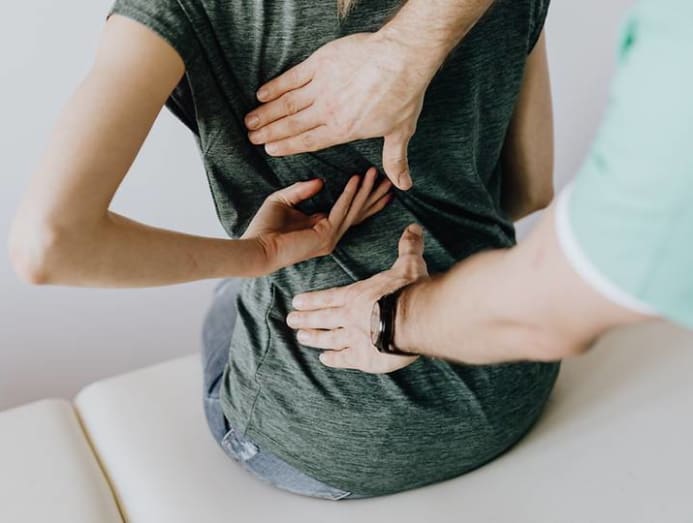
But how sore should you expect to feel after a workout? Liew said a good rule of thumb is anything between ane and 4 on a scale of x, where 10 is the worst pain imaginable. "Anything above that, or if you lot actually experience pain that changes your gait pattern, is an indication that the intensity of your previous action was very loftier," she said.
On the other hand, "bad" pain is pain experienced in the joints during or after the workout session, said Liew. For instance, there is a deviation between the muscular "burn" during a squat and bodily pain in your knees.
If your personal trainer all the same insists that you push through the pain, despite repeated feedback that the exercise is too much for your joints, he or she is over-pushing y'all and is not worth your time and coin.
"This is a sign that you should stop and assess the pain," advised Liew. "If your personal trainer still insists that you push button through the pain, despite repeated feedback that the practice is besides much for your joints, he or she is over-pushing y'all and is not worth your time and money," she said.
Some other fashion to gauge whether you have over-exerted yourself is how you feel when you lot walk into the gym or studio, said Aqil. "If you get in without the motivation or focus but with the feeling of soreness or fatigue before fifty-fifty starting, that may be a sign that you are under recovered."
During training, if there is a meaning dip in operation or a abiding discomfort, that is besides a sign that you accept over-trained, he said. Observe changes, too, such as a reduced ambition, weight loss and slumber quality as these are other scarlet flags that you accept been over-pushing yourself, he added.
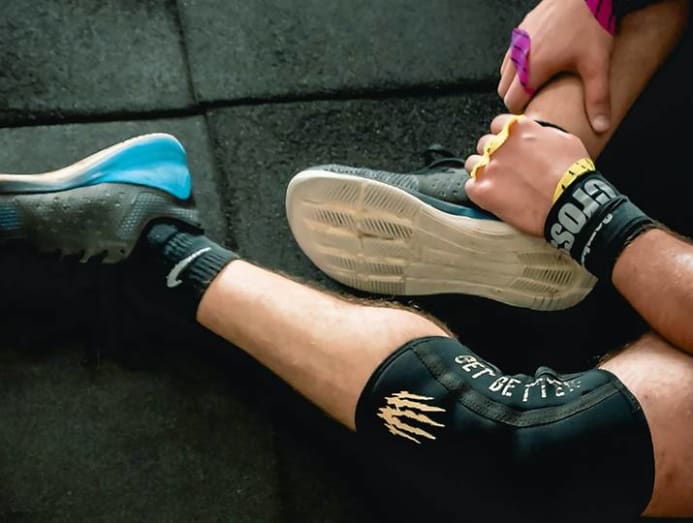
To help you gauge your intensity level, Chiam recommends using the charge per unit of perceived exertion (RPE) scale – and it works even if yous don't own a center charge per unit monitor. Simply rank the effort that yous put in on a scale of 1 (sitting in a chair) to 10 (maximum effort).
For case, she said, a calorie-free evening stroll would measure 2 or three on the RPE scale. Moderate activities (for example, a calorie-free jog) is about four to six, while vigorous activities such as sprinting is rated seven to viii. "If y'all are new to practise, start at RPE three to four, and gradually build information technology upward. Most grouping classes are at to the lowest degree RPE half-dozen to seven," she said.
READ: Working from abode? How to stop gaining weight from all that snacking
Explained Aqil: "The RPE scale is useful every bit information technology is not recommended to have difficult sessions back to dorsum. Having low RPE training sessions in-between high RPE sessions would non merely aid your trunk recover, merely likewise permit fourth dimension for adaptions to the torso, which is essential for muscle growth and strength".

HOW DOES OVER-EXERTION Touch on Y'all?
Besides rhabdomyolysis, there are other injuries that tin can come up from over-exerting yourself. Find out what they are in the common conditioning scenarios below and what you can practice to minimise them:
- Hiking
Taking on the Runway Corridor may seem easy-peasy equally the trail is largely paved (no different from strolling in the park, correct?). Only if you lot cover also much ground too soon, you may exist setting yourself up for "muscle and tendon strains of the back or lower limb, or articulation pains such every bit runner's knee", cautioned Dr Lim. And if yous have osteoarthritis, you can await hurting in the affected joints.
Warm and humid conditions can increase your risk of rhabdomyolysis and exertional rut injuries. "Pick a time to practise your hiking when the temperatures are cooler, such as earlier in the morning, and aim to stop earlier the afternoon," suggested Dr Leo.

- Running
Both long-altitude running and sprinting accept their shares of injuries if you suddenly determine to put on your running shoes without prior training or conditioning.
Other than rhabdomyolysis and heat injuries, "a sudden increase in running book, too as inadequate footwear, can result in stress fractures in the lower limbs," said Dr Lim, adding that pushing too difficult to cross the finish line, peculiarly when untrained, could crusade a sudden cardiac issue or fifty-fifty sudden cardiac death.
Meanwhile, sprinting may event in hamstring tendon and/or muscle tears if you are not trained, or have underlying issues such as hamstring tightness or previous untreated hamstring injuries, said Dr Lim.

To prevent overuse injuries, mix running with other forms of strengthening exercises to reduce injuries – and increase your endurance, too, said Dr Leo. Pre-run stretching exercises are as well important as they "decrease the risk of joint, ligament and musculus injuries", he said.
"Should you feel pain from the joints or muscles, decrease your pace to see if the pain goes away and finish completely if the pain persists."
READ: Christy Chung and Aaron Kwok in their 50s: The truth about celeb diets and workouts
- Swimming
Existence proficient in your stroke is of import, said Dr Leo, equally both the upper and lower limb joints are subjected to abiding motility when you lot're pond. Furthermore, the range of motion is large, especially in sure strokes such every bit butterfly and freestyle, which can increase your risk of injuries, he said.
Injuries of the shoulder rotator gage tendons may occur with over-exertion, said Dr Lim. In breaststroke, the knee ligament may be prone to injuries due to the extensive kicking, she said.
READ: From CrossFit to HIIT: Are you lot at risk of injury at your overcrowded gym?
- Loftier-intensity interval preparation or HIIT
With the high-free energy music and everyone giving his all, it is tempting to endeavor to continue up. Whether it'southward hitting the number of burpees on today'southward workout programme, or pushing yourself to last the final 10 seconds of high-resistance pedalling, in that location's a high chance you may "non focus on the right technique and form of each action", warned Dr Lim. "The risk of injury farther increases with fatigue."
She continued: "This tin issue in muscle, tendon, ligament or joint injuries. Certain workouts include rapid changes in management, such as twisting activities in the genu, and these may issue in injuries to the ligaments, meniscus injuries, or even kneecap dislocations".
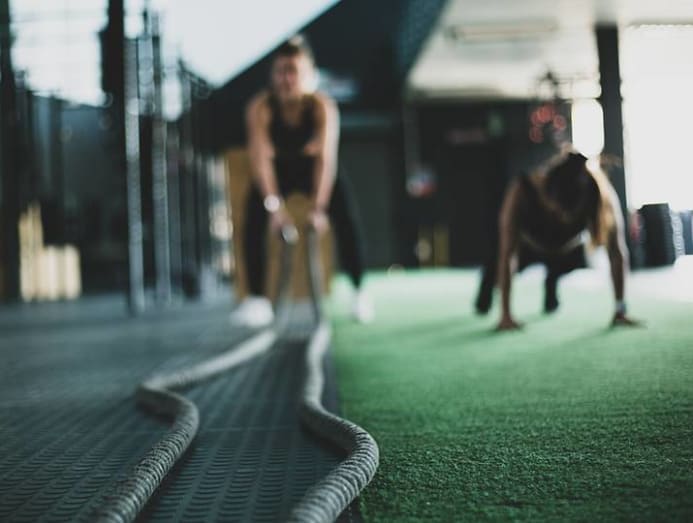
Chiam, who is also an HIIT instructor, said to look out for these signs if you doubtable rhabdomyolysis: Sharp pain, dizziness, difficulty catching your breath, and excessive muscle fatigue.
"See a medico if you experience signs and symptoms of severe exertional injury such as thigh or dogie swelling or pain, which are usually seen in patients presenting with rhabdomyolysis," said Dr Leo.
- Yoga
Should your yoga teacher be physically pushing your trunk into the intended pose during grade? There is no correct or wrong yoga do, according to Gajendra Badwal, the founder of Marshal Studio.
For example, in that location is a "very regimental military" practice where teachers "oft exert pressure on their students and believe that everyone should be able to fit in all yoga postures, no matter what". In that location are besides teachers who "recognise that everybody is unique and dissimilar" and guide students to progress at their own pace, said Badwal.
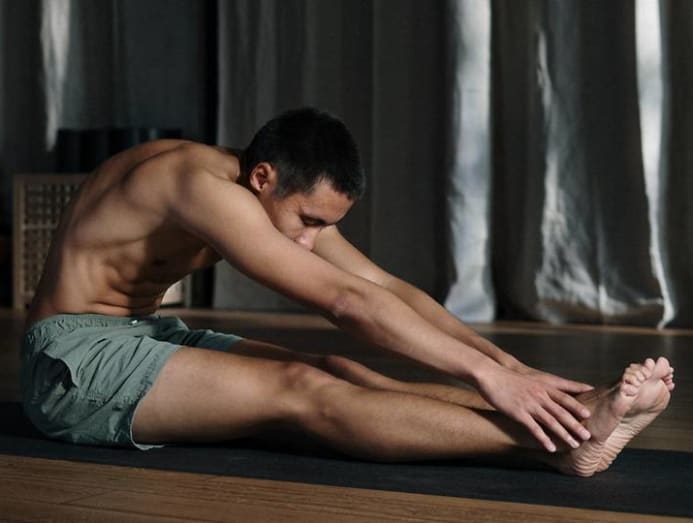
Decide what works best for yous, he advised. "If you don't like your instructor to exert pressure on your body, notice someone else to get to, or other yoga classes or studios where you lot can observe the culture and exercise that you vibe with."
As for discerning if the hurting is besides much, the challenge is to discern which pain y'all are experiencing, said Badwal. To simplify it, think of "good pain" as a sensation that feels like your soft tissues are pulling away from your joints, similar when you're stretching your muscles. Bad pain is felt close to the joints and should be avoided, he said.
"If I take to give you a number on a pain scale of one to x, someday you find yourself fighting with a pain in a higher place seven, enquire yourself: Why are you doing it? What is the intention and what good does it to your trunk and heed?" said Badwal.
READ: Getting fit in 2021? Common workout mistakes we always make and how to gear up these
- Weight training
Jeannie Wang, a strength training instructor with Fitness Outset, said that sharp pain and/or pain not at the working muscles is a sign to cease or ease off by switching to a lighter load. "Shoulder, knee and spinal bug are common if one carries as well heavy a weight and forgo the technique," she warned.
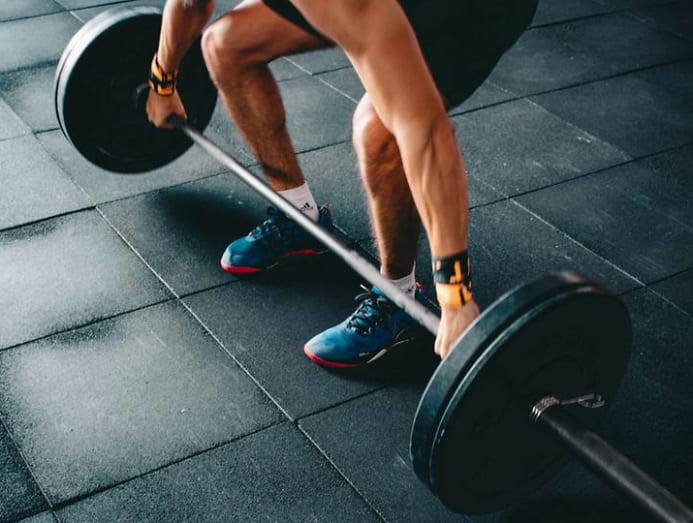
If you're new or have but returned to your routine, Chiam suggested using a three to 5 repetitions in reserve (RIR). "This ways that for the weight you're using, you could take washed an additional three to v more reps. This allows for a safer way of training and an emphasis on technique as opposed to just loading," she said.
Other than increasing your load and repetitions progressively, information technology is also crucial to have adequate recovery time in-betwixt sessions to forestall over-use injuries, said Dr Leo.
READ: Reading this on your phone while exercising? Multi-tasking may lead to injuries
- Shadow boxing
It'southward not similar y'all are punching or boot anything, and so what do you have to lose? "Without a target to punch or kick, there is a risk of hyper-extending the joints, causing strain to the muscles, tendons and ligaments," said Wang. There is a take chances of pain in the joints from uncontrolled kicks and punches, she said.
Long and high-intensity sessions tin also crusade "meaning strains on the joints, muscles and shoulders", said Dr Leo. "Boxing while one is exhausted volition result in more injuries, and then information technology is important to space out your exercises and allow adequate recovery time."
Consult your doctor earlier starting whatsoever fitness programme. Come across a physician early if you suffer from any pain as a outcome of training.
schmidtinsittlyse.blogspot.com
Source: https://cnalifestyle.channelnewsasia.com/wellness/pain-during-exercise-when-to-stop-running-yoga-swimming-hiit-237791
0 Response to "‘Good’ vs ‘bad’ pain: How to tell when your body is saying 'no' while exercising"
Post a Comment